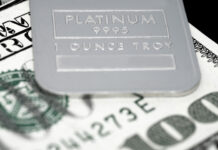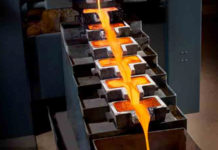This has been an extraordinary year for gold shares. Investors in Pan African Resources, a mid-tier gold producer operating in Mpumalanga, would have doubled their money whereas the gold price is up “only” 32%.
Everyone in the West is very wary of the gold price because of recent central bank purchasing and geopolitical problems, so they are not buying the gold stocks – Georges Lequime
The looming question is where gold will head next year.
A Donald Trump presidency raises the prospect of tax cuts, bad for the fiscus but encouraging of the gold price further. US politics aside, central banks are expected to remain net buyers of gold while geopolitical distress and polarisation will also support the metal into 2025, economists say. But how long can gold be expected to stay at record levels?
According to Mohamed El-Erian, president of Queens’ College, Cambridge, there might be a greater dislocation at play to do with the US economy’s ability to tether the global financial system. “What has been happening to the gold price is not just unusual in terms of traditional economic and financial influences,” he wrote in the Financial Times on October 21. “It also goes beyond strict geopolitical influences to capture a broader phenomenon which is building secular momentum.”
Seen in these terms, the normal economic guardrails by which gold’s valuation operates are being dismantled. But the clamour and enthusiasm for gold is at a worrying decibel. If then one is contrarian in disposition, buying shares in a streaming company such as Sandstorm Gold — Lequime’s preferred stock when pushed to take a view — might be a defensive means of playing the precious metals market risk.
“Everyone in the West is very wary of the gold price because of recent central bank purchasing and geopolitical problems, so they are not buying the gold stocks,” says Lequime. “Tactically, the streamers give you the lowest risk exposure to gold.”
Analysts at UK bank Berenberg recommend Wheaton Precious Metals as their preferred option among the streaming companies, partly based on its recent deal with Montage Gold. Based on the bank’s conservative $1,550/oz forecast for the gold price, it gets a 3% internal rate of return on Wheaton’s Koné deal, rising to 9% on $2,500/oz gold.
“Wheaton remains a lower-risk, high-quality way to gain precious metals exposure in our view,” the bank said in a recent report.
A version of this article first appeared in the Financial Mail.












